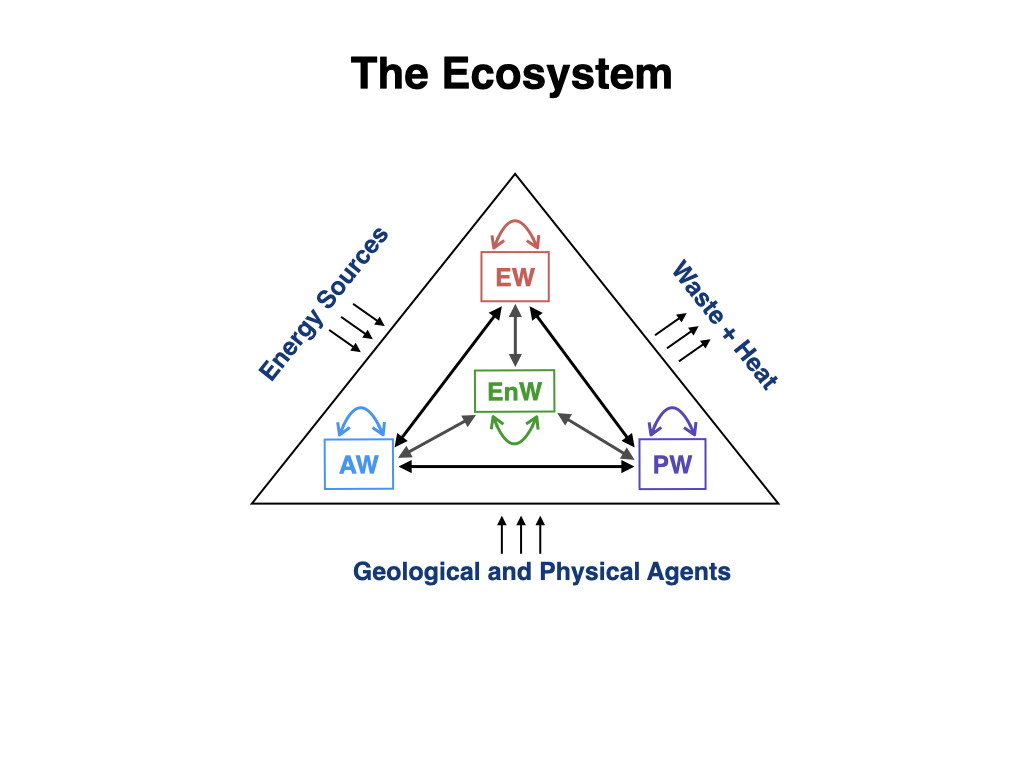The ecosystem is an essential biological concept linking the living and the inanimate and represents the main structural and functional unit of nature. The biodiversity that exists on our planet can be organized into closely interconnected living worlds: acellular (viruses and capsidless genetic elements), prokaryotic (bacteria and archaea), and eukaryotic (all nucleated organisms). I want to highlight the presence of viruses as components of biodiversity because they are often overlooked in many studies despite their essential ecological and evolutionary role. Furthermore, I propose seven distinctive hallmarks that are inherent to any ecosystem: biodiversity, physical environment, hierarchy, interactivity, openness, “homecostasis”, and evolutionary. From the interaction and coupling of these living worlds with the environment (the environmental world), I define the ecosystem as a specific and dynamic ensemble of living and non-living worlds that functions as an open, hierarchical, and evolving system. This complex web of interactions that we call ecosystem can be graphically represented as a triangle reflecting the dynamic equilibrium between all the worlds. Finally, I propose a new way of graphically relating the ecosystem to biodiversity by taking the ecosystem as the nucleus from which all living worlds emerge.

